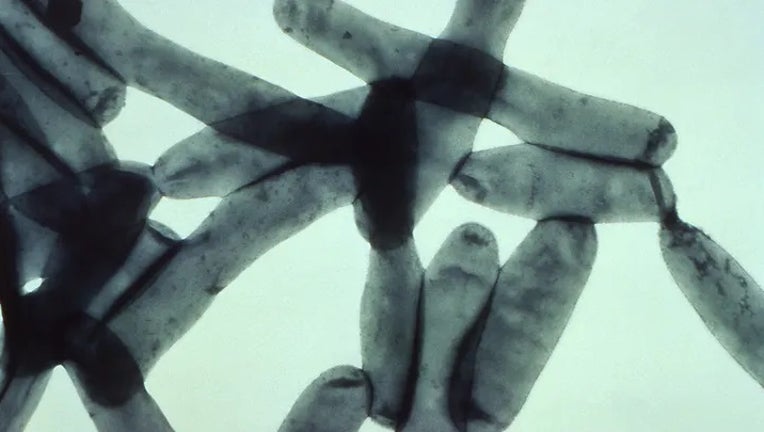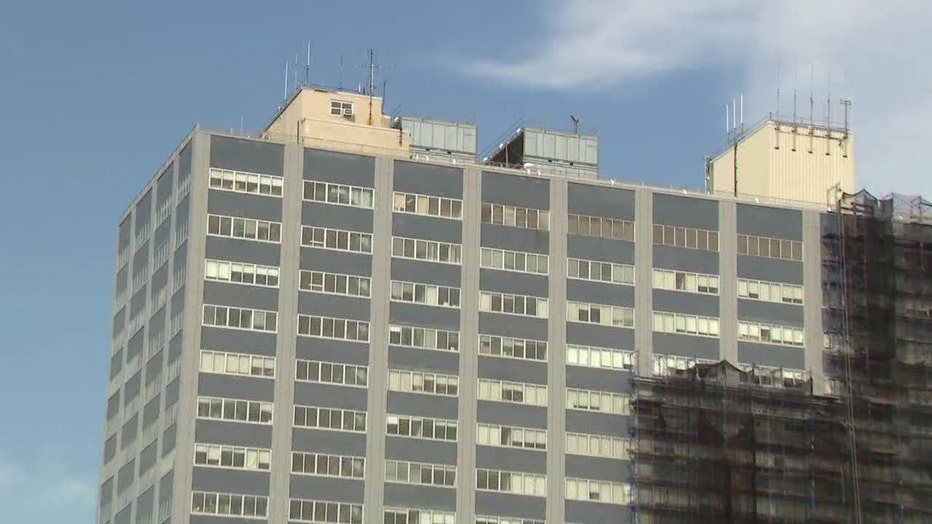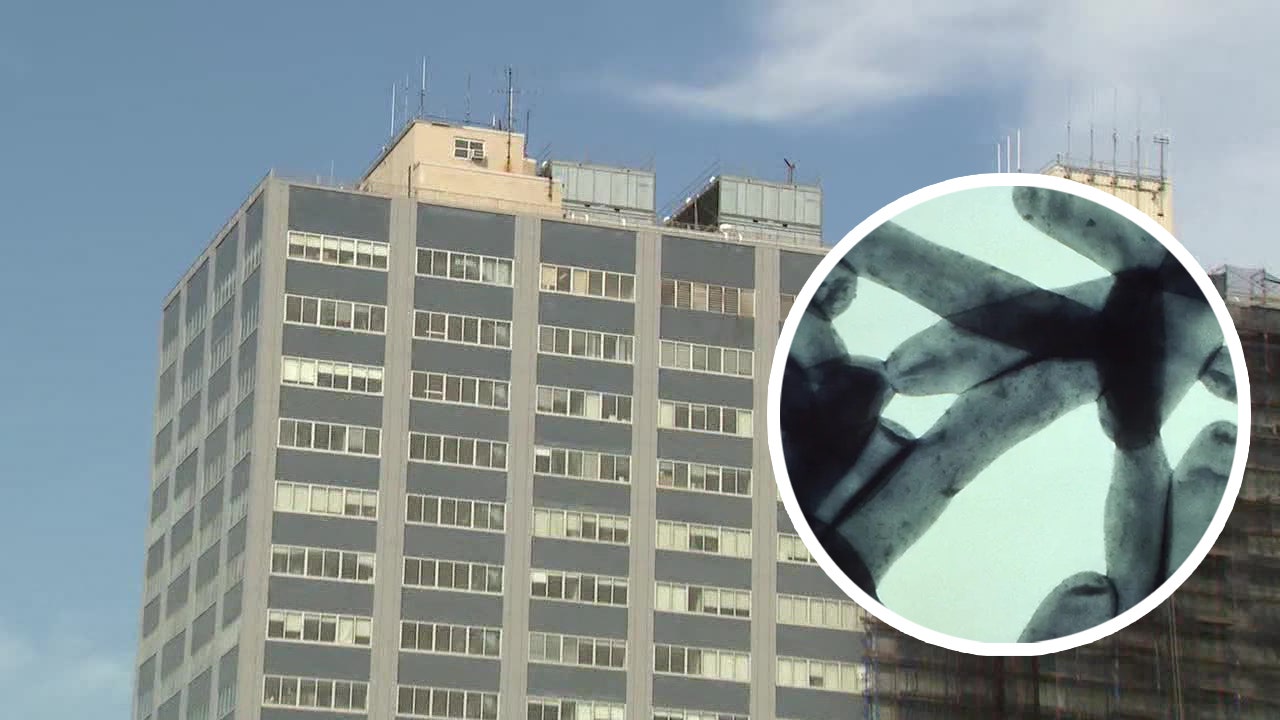 article
article
Under a magnification of 43,700X, this transmission electron micrograph (TEM) created from a whole preparation of Legionella pneumophila bacteria that had been negatively stained using uranyl acetate, and grown on bacteriologic medium, reveals L. pne
NEW YORK – A fifth person has died from the Legionnaires’ disease cluster in Central Harlem.
NYC Health + Hospitals has confirmed 108 cases so far in the outbreak that began in late July. As of Monday, 14 are hospitalized.
What we know about this outbreak
What we know:
The five zip codes where the cluster of cases was found are 10027, 10030, 10035, 10037 and 10039.

One of the buildings with a cooling tower where Legionella bacteria was detected.
Additionally, 12 cooling towers have tested positive for live bacteria in 10 buildings. These towers have been sanitized and treated, with the last completed on Aug. 15.
Health officials have confirmed that the outbreak was caused by these contaminated cooling towers. The disease reportedly spreads through water vapor or mist from cooling towers and does not affect normal water sources.
The department continues to work to identify the source responsible for Legionnaires’ disease in Central Harlem.
Legionnaires’ disease in NYC
This isn’t the first summer to see clusters of Legionnaires’ disease break out in New York City.
Dig deeper:
The disease has been a reportable condition in the city since 1985, according to the National Institutes of Health, which states that reported cases rose from 47 in 2000 to 438 in 2015.
The largest outbreak in New York City history left 16 people dead in the South Bronx in 2015. A total of 138 people were diagnosed.
The city has seen recurring outbreaks due to its reliance on large water systems.
Common sources of infection include cooling towers, whirlpool spas, humidifiers, hot tubs, and the plumbing systems of large buildings.
What is Legionnaires’ disease?
Why you should care:
Symptoms of Legionnaires’ disease are similar to other types of pneumonia and usually develop between 2 and 14 days after exposure, but it is not usually spread from person to person, rather contracted from the source of the mist or water vapor that contains the bacteria. Symptoms can include a high fever, cough, muscle aches, headaches, and shortness of breath. In some cases, patients may also experience confusion, nausea, or diarrhea.

The Legionella bacteria are commonly found in freshwater environments, but they can become a health concern when they grow and spread in human-made water systems, such as cooling towers, hot tubs, decorative fountains, and large plumbing systems.
While the majority of healthy people who are exposed to the bacteria do not get sick, certain factors can increase a person’s risk of developing Legionnaires’ disease. Those at the highest risk include people 50 years or older, current or former smokers, individuals with chronic lung disease or weakened immune systems, and those with underlying medical conditions such as cancer, kidney failure, or diabetes.
The Source: Information from this article was sourced from the NYC Department of Health, Mayor Eric Adams and the National Institutes of Health.
